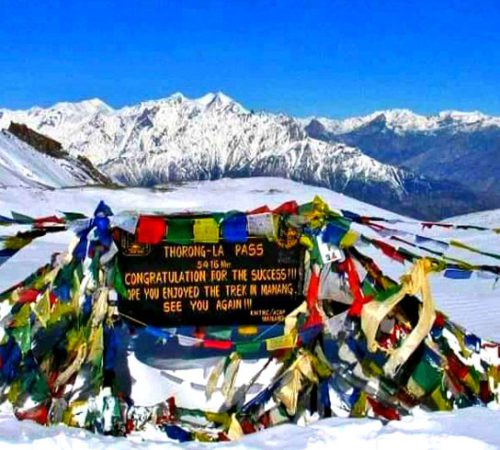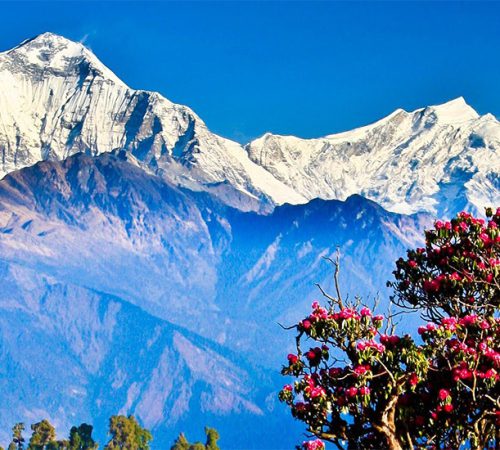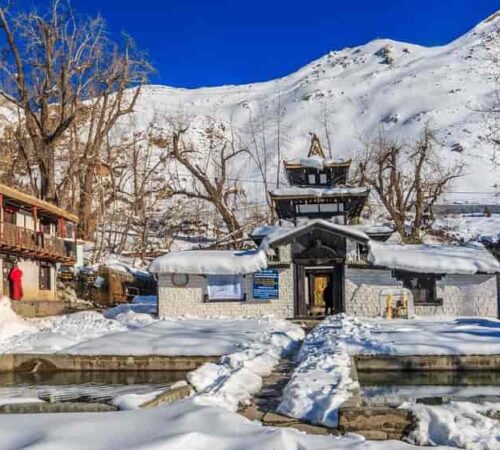Trip Facts
-
Duration
17 Days
-
Trip Start and End
Kathmandu Kathmandu
-
Difficulty Level
Moderate
-
Maximum Altitude
3840m/12,598.43ft - Lo Manthang
-
Best Season
September-November and March-May.
-
Accommodation
Hotels, Resorts & Lodges
-
Transportation
Flight, Jeep, Bus
Highlights
- Lo Manthang
- Tibetan Culture
- Panoramic Views
- Ancient Cave Dwellings
- Restricted Area
- Local Hospitality
- Challenges and Rewards
- Photographic Opportunities
- Spiritual Renewal
Trip Overview
The Upper Mustang trek in Nepal offers a mesmerizing journey through diverse landscapes and cultural experiences. Beginning in the vibrant city of Pokhara, trekkers venture into the Annapurna region, where the sacred Muktinath temple stands as a symbol of religious harmony, revered by both Hindus and Buddhists. The trek then ascends into the remote and rugged terrain of Upper Mustang, a region often referred to as the "Last Forbidden Kingdom," where ancient Tibetan Buddhist culture remains well-preserved. As trekkers traverse through arid valleys, towering cliffs, and picturesque villages, they encounter ancient monasteries, intricate cave dwellings, and stunning vistas of the Himalayas, including views of Nilgiri, Annapurna, and Dhaulagiri peaks. The journey provides not only physical challenges but also profound spiritual and cultural insights, as travelers immerse themselves in the rich heritage of the region.
Moreover, the Upper Mustang trek offers a unique opportunity to explore a lesser-known corner of the Himalayas, away from the crowds of more popular routes. The restricted nature of the Upper Mustang region ensures a sense of exclusivity and adventure, with limited permits allowing for a more intimate and authentic experience. Along the trail, trekkers interact with friendly locals, experiencing their hospitality and gaining insight into their traditional way of life. From the medieval walled city of Lo Manthang to the ancient cave paintings of Chhosar, each stop along the trek unveils a new facet of Upper Mustang's rich cultural tapestry. Whether marveling at the natural beauty of the landscape or delving into the region's history and spirituality, the Upper Mustang trek promises an unforgettable journey of discovery and exploration in the heart of the Himalayas.
Detail Itinerary
+ Show More• Arrive in Kathmandu and transfer to your hotel.
• Explore the bustling streets of Thamel, a vibrant tourist hub in Kathmandu, and prepare for your trek.
Cost Includes
- Trekking Permits
- Transportation
- Accommodation
- Meals
- Trekking Guide and Porter
- Trekking Equipment
Cost Excludes
- International Flights
- Travel Insurance
- Personal Expenses
- Tipping
- Optional Activities
- Visa Fees
- Additional Services
- Extra days stay due to unforeseen circumstances
Guidelines / Information
Permits:
Trekking in the Upper Mustang region requires special permits, including the Restricted Area Permit, Trekkers Information Management System (TIMS) card and the Annapurna Conservation Area Permit (ACAP). These permits can be obtained through registered trekking agencies in Kathmandu or Pokhara. Make sure to have these permits arranged before starting your trek.
Physical Fitness:
The Muktinath and Upper Mustang trek involves trekking at high altitudes and traversing rugged terrain. It’s essential to be in good physical condition and undertake appropriate training before the trek to ensure a safe and enjoyable experience.
Altitude Sickness:
Acclimatization is crucial when trekking at high altitudes to prevent altitude sickness. Take your time to acclimatize properly, stay hydrated, and be aware of symptoms such as headache, nausea, and fatigue. If you experience severe symptoms, descend to a lower altitude and seek medical attention if necessary
Weather:
The weather in the Mustang region can be unpredictable, with temperatures varying widely between day and night. The best time to undertake the trek is during the spring (March to May) and autumn (September to November) seasons when the weather is relatively stable, and the skies are clear. Avoid trekking during the monsoon season (June to August) due to heavy rainfall and the risk of landslides.
Accommodation:
Accommodation along the trekking route consists primarily of teahouses or lodges, offering basic amenities such as beds, blankets, and meals. It’s advisable to carry a sleeping bag for added warmth and comfort, especially during colder months.
Food and Water:
Most teahouses along the trekking route serve a variety of meals, including Nepali, Tibetan, and international dishes. It’s essential to drink plenty of water and avoid consuming untreated water from streams or taps. Carry water purification tablets or a water filtration system to ensure safe drinking water.
Pack Essentials:
Pack wisely for the trek, including appropriate clothing for varying weather conditions (layers are key), sturdy hiking boots, a daypack, sunscreen, sunglasses, a hat, and a first-aid kit. It’s also recommended to carry snacks, energy bars, and personal toiletries.
Cultural Sensitivity:
: Respect the local customs, traditions, and beliefs of the communities you encounter along the trekking route. Ask for permission before taking photographs of people or religious sites, and avoid wearing revealing clothing or behaving inappropriately.
Waste Management:
Practice responsible trekking by disposing of waste properly and minimizing your environmental impact. Carry out any non-biodegradable waste and follow the principles of “Leave No Trace” to preserve the natural beauty of the Mustang region for future generations.
Emergency Contacts:
Familiarize yourself with emergency contact numbers, including local authorities, trekking agencies, and medical facilities. Carry a fully charged mobile phone with local SIM card coverage or a satellite phone for communication in case of emergencies.
FAQs
Yes, trekking in the Upper Mustang region requires special permits, including the Restricted Area Permit, Trekkers Information Management System (TIMS) card and the Annapurna Conservation Area Permit (ACAP). These permits can be obtained through registered trekking agencies in Nepal.
The best time to undertake the trek is during the spring (March to May) and autumn (September to November) seasons when the weather is relatively stable, and the skies are clear. Avoid trekking during the monsoon season (June to August) due to heavy rainfall and the risk of landslides
The trek to Muktinath and Upper Mustang is considered moderately difficult. It involves trekking at high altitudes, traversing rugged terrain, and crossing mountain passes. Proper physical fitness and acclimatization are essential for a safe and enjoyable trek.
Accommodation along the trekking route consists primarily of teahouses or lodges, offering basic amenities such as beds, blankets, and meals. It’s advisable to carry a sleeping bag for added warmth and comfort, especially during colder months.
Essential items to pack for the trek include appropriate clothing for varying weather conditions, sturdy hiking boots, a daypack, sunscreen, sunglasses, a hat, water purification tablets or a filtration system, snacks, energy bars, and a first-aid kit.
To prevent altitude sickness, it’s essential to acclimatize properly by ascending gradually, staying hydrated, and recognizing symptoms such as headache, nausea, and fatigue. Carry medication such as Diamox as a preventive measure and descend to a lower altitude if symptoms worsen.
Familiarize yourself with emergency contact numbers, including local authorities, trekking agencies, and medical facilities. Carry a fully charged mobile phone with local SIM card coverage or a satellite phone for communication in case of emergencies. Additionally, consider purchasing travel insurance with coverage for medical evacuation and emergencies.














